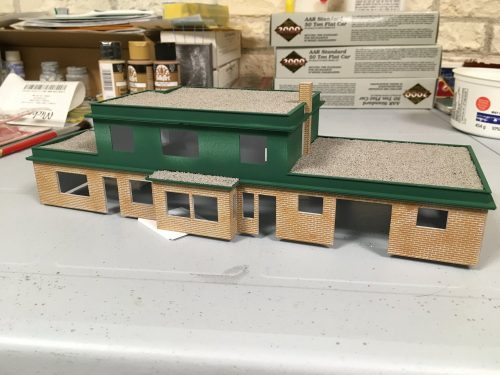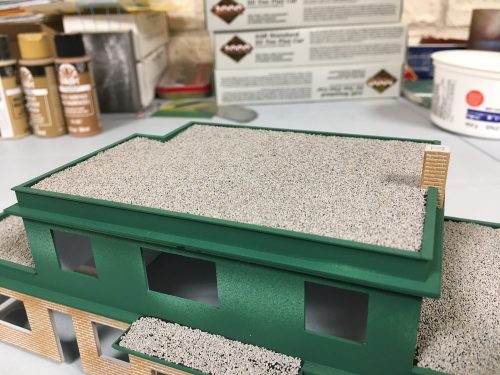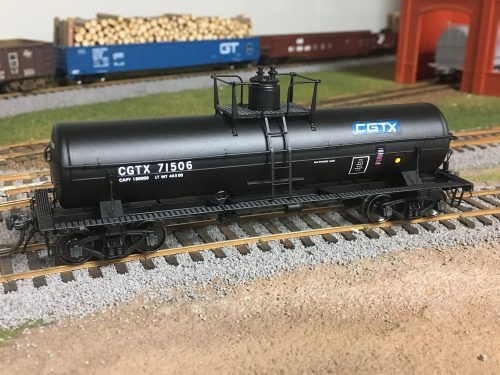A bit more work with paint and gravel and the roof of the station is now surfaced.
As noted in a previous post where the slope of the roof was built up from styrene sheet, the “flat” roof is not, in fact, actually flat but does slope in order to provide drainage. That slope is in fact there, although with the gravel surface added, it almost completely visually vanished, except in that one subtle spot in the corner where the roof actually slopes against the top of the wall. (That reminds me, I need to go in yet and actually add a couple of round plugs to represent the drains, as well as a vent pipe for the toilet plumbing. All easy bits to add…)
Actually flat or not however, the technique for making the tar and gravel roof is pretty simple. After applying a thick brush coat of black paint (just regular flat black acrylic) and while the paint is still wet, sprinkle on a liberal coating of gravel and let sit. I used some fine ballast which I sifted to make sure I was only left with the finest grains. The effect is good, however it’s still a bit coarse actually for a gravel roof. I may yet scrape this off and re-do it with finer hand-sifted natural materials – I’ll have to sleep on that idea yet for a bit – but the technique is still sound.
You’ll also notice I sprayed the Sylvan Green colour for the trim before doing the roof, as the trim borders the roof surface, and that would be more than a little bit impossible to mask and spray after the fact. The bold green colour on the upper walls though will not last – only the trim is actually this colour, and light grey siding is yet to be applied to the wall surfaces, so the station will have one last drastic colour change for completion.









